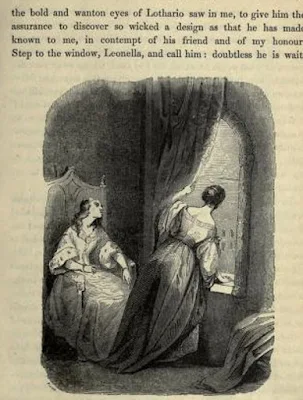Don Quixote de la Mancha (1837) PDF book by Miguel de Cervantes With Illustrations
Cervantes was present at this famous victory, where he was wounded in the left hand by a blow from a scimitar, or, as some assert, by a gunshot, so severely that he was obliged to have it amputated at tho wrist whilst in the hospital at Messina; but the operation was so unskilfully performed that he lost the use of the entire arm ever afterward. He was not discouraged by this wound, nor induced to give up his profession as a soldier. Indeed, he seems, from his own words, to be very proud of the honor which his loss conferred upon him, "My wound," he says, "was received on the most glorious occasion that any age, past or present, ever saw, or that the future can ever hope to see. To those who barely behold them, indeed, my wounds may not seem honorable; it is by those who know how I came by them that they will be lightly esteemed.
Better is it for a soldier to die in battle than to save his life by running away. For my part, I had rather be again present, were it possible, in that famous battle than whole and sound without sharing in the glory of it. The scars which a soldier exhibits in his breast and face are stars to guide others to the haven of honor and the love of just praise."
 |
| example from the book |
The year following the victory of Lepanto Cervantes still continued with the same fleet and took part in several attacks on the coast of the Morea. At the end of 1572, when the allied forces were disbanded, Colonna returned to Kome, whither our author probably accompanied him, since he tells us that he followed his " conquering banners." He afterward enlisted in the Neapolitan army of the King of Spain, in which he remained for three years, though without rising above the rank of a private soldier; but it must be remembered that, at the time of which we are now speaking, such as the condition of some of the noblest men of their country, it was accounted no disgrace for even a scion of the nobility to fight as a simple halberdier, or musqueteer, in the service of his prince.
On the 26th of September, 1575, Cervantes embarked on board a galley, called the Sun^ and was sailing from Naples to Spain, when his ship was attacked by some Moorish corsairs, and both he and aU the rest of the crew were taken prisoners and carried off to Algiers.
When the Christians were divided amongst their captors, he fell to a lot of the captain, the famous Arnaut^ Mami, an Albanian renegade, whose atrocious cruelties are too disgusting to be mentioned. He seems to have treated his captive with peculiar harshness, perhaps hoping that by so doing he might render him the more impatient of his servitude, and so induce him to pay a higher ransom, which the rank and condition of his friends in Europe appeared to promise. In this state, Cervantes continued five years. Some have thought that in "the captive's" tale related in Don Quixote, we may collect the particulars of his own fortunes whilst in Africa; but, even granting that some of the incidents may be the same, it is now generally supposed that we shall be deceived if we regard them as any detailed account of his captivity. A man of Cervantes' enterprise and abilities was not likely to endure tamely the hardships of slavery, and we accordingly find that he was constantly forming schemes for escape. The last of these, which was the boldest and best contrived of all, failed because he had admitted a traitor to a share in his project.
Author: Miguel de Cervantes
Translator: Charles Jarvis
Illustrator Tony Johannot
Publication Date: 1837)Volume 1
Updated
[Download This PDF Book ##download##]


